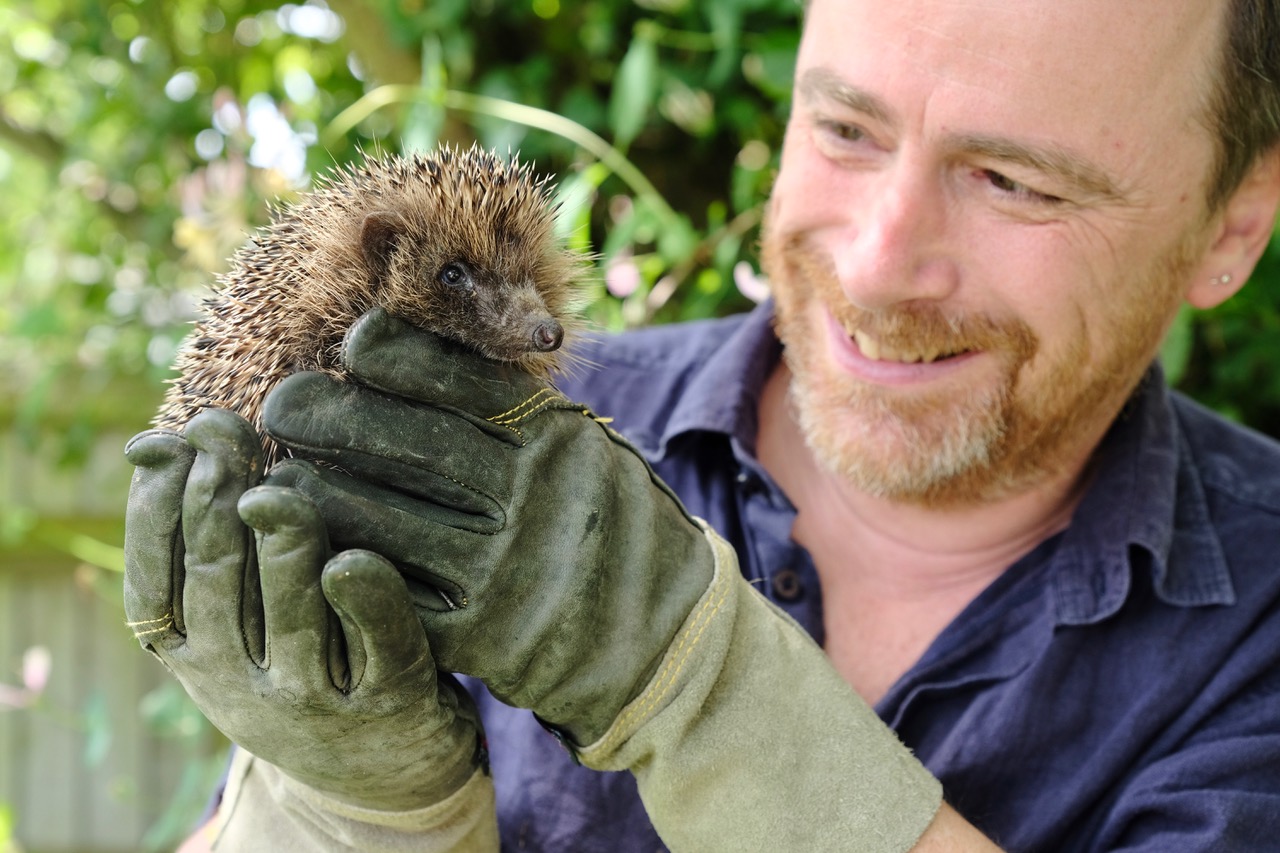Canals have a side that is managed to allow boats to travel and a side where vegetation is left to grow © Hugh Warwick
Canals generate a degree of prejudice. While rivers are seen as the life-giving arteries of our landscape, canals can be viewed as septic sumps accumulating the detritus of the industries that created them.
Real wildlife, it is believed, can be found on a lazy summer's evening on a Devon river, with the last light filtered through low-hanging lichen- and moss-rich trees, and the air full of insects feeding the fish that are feeding the otters. Otters being a symbol of a healthy waterway, as well as icons of vibrance and grace.
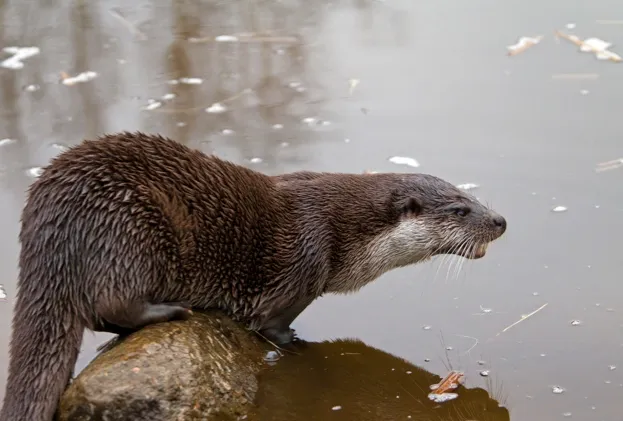
Otters are a symbol of healthy waterways © Arterra / UIG / Getty
Rivers are natural, fed by a catchment that can filter water crystal clear or gift it nutritious sediment. Canals get their water from a reservoir and nutrients from the accidental spillages of chemical toilets. Rivers are where we swim in the summer, kingfishers peeping as they dart electric blue over our heads. Canals are where bodies are hidden and you can catch Weil's disease while you watch rats fight.
OK, so I might be exaggerating a little, but really opinion has it there is little to compare between these two wet lines in the landscape. At least, that is the prejudice with which I began to research the importance of canals for wildlife; research that was to begin on a narrow boat.
Narrow boats are something of which I have some experience. My wife used to live on one, moored on the Thames, and I have fond memories of living and travelling on the river. But the prospect of several days on a canal travelling south from Birmingham did not fill me with glee. However, that was how I planned to get a good introduction to the canal system of which so many people are so proud.
My interest lies in the lines we make in the landscape - what I have called the 'linescape'. And one of the most fascinating has to be the canals. The lines we have built onto or cut into the countryside fall broadly into two categories: those that act as agents of connectivity and those that cause fragmentation. Hedges, ditches, dykes and walls all act as corridors in the countryside; roads and railways cut it into increasingly unsustainable pockets. Canals straddle this division. Clearly they cut a barrier into the land for some species, but they also act as a wonderful corridor along which life can flourish.
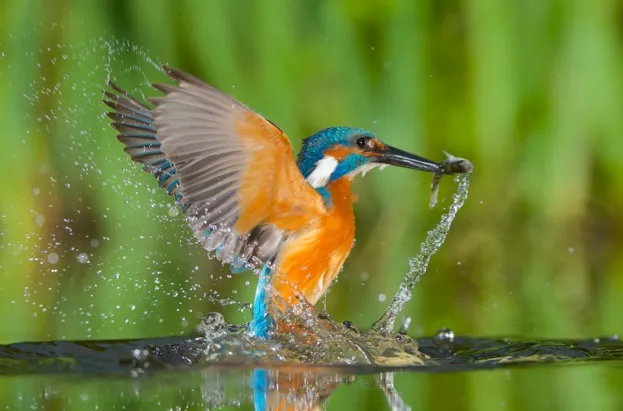
Kingfishers hunt for prey along the margins of canals © Corné van Oosterhout / Barcroft Media / Getty
A slower pace of life
Habitat fragmentation is a vital piece of the puzzle of how we are insulting the natural world, but it has not received the attention it is due. Fortunately, there is a move in conservation to expand thinking to encompass the landscape as a whole, rather than pockets or species within it.
Travelling south from Birmingham on the boat Tinker, with her captain - the poet Jo Bell - at the helm, was an eye-opening and prejudice-bashing experience. Soon we were out of the concrete world and deep in the heart of the countryside on the Grand Union Canal. Travelling at walking pace is just about perfect for taking in the bucolic scenery.
As we slipped along the line towards our destination in Stratford-upon-Avon, I was aware that our surrounds were even more river-like than many rivers I have been on. Green streamed to the water's edge, herons stalked the margins, and I had to tread carefully at the locks to avoid toads that were enjoying the damp.
The canal, out here at least, is tranquil; a place of leisure where some people have taken up residence and others pass by at a steady 4mph, carefully ensuring no wake breaks on the edge where it could accelerate bank collapse. But it was not always like this and Jo was able to give me a very different perspective on the waterway.
"Try to imagine the M6 motorway in 100 years' time being used by pedestrians and caravans for pleasure," she said. "That is how big a deal this change would be to anyone from the early 19th century. Canals were the motorways of the Industrial Revolution.
"There are 2,000 miles of canals in Britain and 50 per cent of the population lives within five miles of one. If managed well, they can be a wonderful way of pulling a bit of this," she indicated the idyllic scene through which we chugged, "into the heart of an urban space, bringing with it a chance for contact with nature."
Most canals have an 'on' and 'off' side. The towpath will be on the on-side; that side will be owned and managed by the Canal & River Trust (CRT). It may well be reinforced with metal and concrete in places and, as such, offers less in terms of habitat to those riparian, or river-side, specialists. The 'off' side is much more exciting. This is where water voles make their homes. These wonderful rodents may use water and swim well, but they don't have webbed feet so the slow currents of canals are ideal as long as there is a bank into which they can burrow.
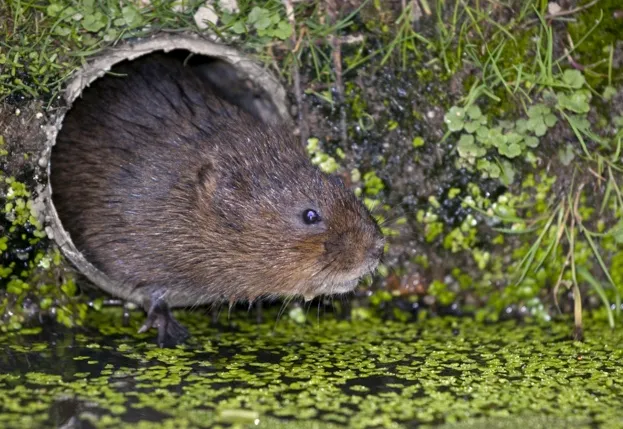
The slow-moving water of canals suits water voles © UIG / Getty
However, this can lead to problems. Many boaters prefer the canals to have hard sides; it makes mooring easier and also reduces the chance of vegetation encroaching into the waterway. But reinforced walls can cause voles a headache as they try and tunnel out a new home.
The CRT is aware of the potential conflict and is trying to ensure that the voles have the opportunity to flourish by using more organic materials in bank management. For example, it has adopted coir, coconut fibre, to provide a support for the bank while maintaining a structure in which both plants can grow and animals can burrow.
Later I spoke to water vole expert Tom Moorhouse from the Wildlife Conservation Research Unit, University of Oxford, who explained why this is so important. "Voles have been lost from well over 98 per cent of their range since 1939, so any move to increase the amount of suitable habitat should be a good thing. But even the best habitat is unlikely to offer good protection from American mink, and so mink control is vital. If we eradicated mink then we would not have to keep investing in piecemeal measures to help water voles, and that would be far less than the cost of, for example, a single fighter jet."
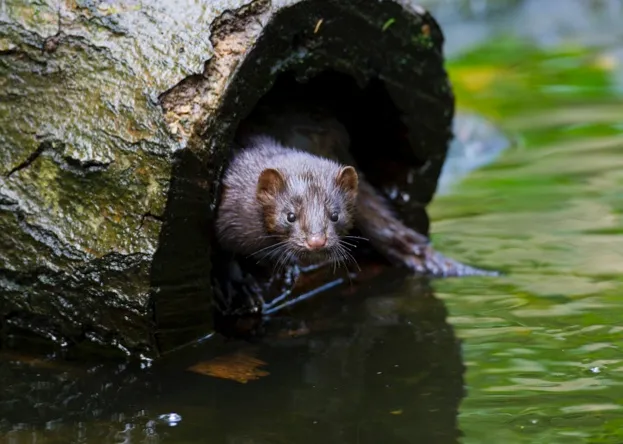
Canals enable invasive species such as American mink to spread quickly © Arterra / UIG / Getty
Connecting habitats
Mink are not the only unwelcome inhabitants of the canal network and there is an interesting side effect of these industrial lines that means they can spread alarmingly. Canals do something that rivers do not, and that is cut across watersheds. This might not sound dramatic but before canals it was not a simple business for new aquatic species to extend their range outside the river network in which they found themselves. But canals create a great potential for spread. And the CRT keeps a list of a number of species that it would rather didn't.
The American signal crayfish, for example, has not been in the UK that long but has made our waterways its home, spreading along both rivers and canals, outcompeting our native, white-clawed crayfish, undermining the banks with its tunnels and causing towpaths to collapse. Other invaders are less dramatic but equally destructive. The fairy fern and the New Zealand pigmyweed can smother a canal, blocking out light, which results in oxygen levels in the water plummeting and the die-off of aquatic organisms.
So the CRT invests heavily each year in trying to keep the network as free of the more damaging invasive species as possible, while at the same time making it a haven for those that need help.
At one of the locks, I noticed an unlikely canal resident. While Jo remained at Tinker's helm I was pushing the beam that controlled the gate, and I saw something flying towards me that then seemed to disappear into the woodwork. Much to the annoyance of my captain, I stopped and stared. Out of a small hole flew a bee and not long after it returned clutching a disc of green leaf. This was a leaf-cutter bee. The solitary insects build the cells of their nests using pieces of leaf glued together with saliva in which they lay eggs and the emergent grubs hibernate until the next spring.
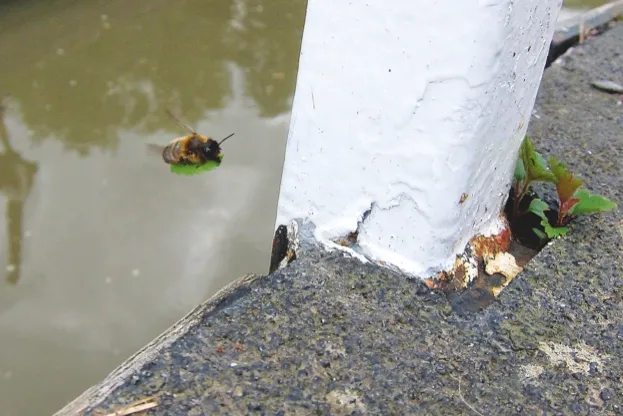
Hugh was surprised to see a leaf-cutter bee nesting in a lock beam © Hugh Warwick
The narrow boat journey was becoming mesmeric. I was sitting in the 'cratch' - the open bit at the front - with my mind wandering, when suddenly the blue lightning of a kingfisher flashed by. By contrast, the floating corpse of a muntjac suggested how the canal can become a barrier to some species.
As did the molehills that lined the bank by the towpath. I could imagine a determined miner, with a mind to keep going straight, becoming frustrated by the metal wall that marked the end of dry land. There is no way a mole can overcome the fragmentation of a canal.
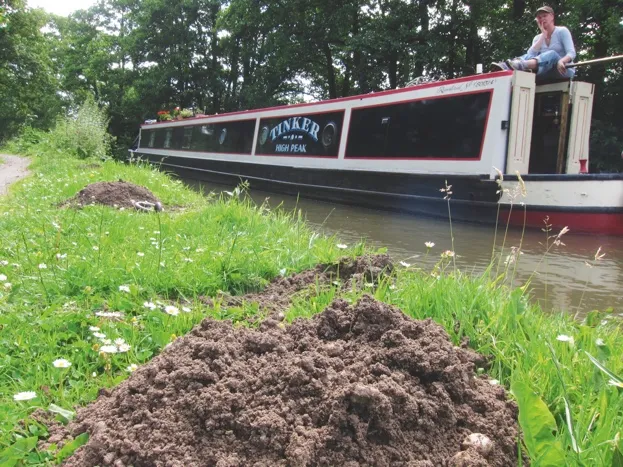
Tinker sails past a line of molehills - canals are barriers for moles © Hugh Warwick
A few months after my journey with Jo, I met up with the CRT's ecologist, Mark Robinson. He took me for a walk beneath the M42, alongside desolate concrete and graffiti-ridden walls. Despite the surroundings, he is a great advocate for canals as wildlife sanctuaries.
"I became excited by canals around 14 years ago," he explained as we walked under the grumbling motorway, "when I realised how important they are to bats. There is a tunnel below Birmingham, the Curzon Street Tunnel, that is used by Daubenton's bats to get under some of the busiest roads in the country. Canals could have been built for bats; they provide amazing roosting and foraging habitats."

A canal runs beneath the M42 © Hugh Warwick
Safe journey
It is not just bats that have benefitted. As he was explaining how the rare fen raft spider has taken up residence on the Swansea Canal, he spotted a grey wagtail defending its linear territory under the motorway. "Wildlife has suffered because we have been removing food and shelter. Farmland is more like a factory. But these lines we manage, well, they can provide both. And more, they also have the potential to provide safe passage through a hostile environment, and connections in a fragmented landscape."
Then, to prove his point, he paused and pointed at the concrete edge of the path under the M42. As I followed his finger, I saw a purplish black smudge. I dropped to my knees, lowered my nose and took a deep sniff. Somehow fish can metamorphose into something redolent of jasmine and tea. Here, in the most unlikely of places, was proof of the presence of the wildest of animals. This surprisingly delightful offering was spraint: otter poo.
Hugh Warwick is an ecologist and writer. His latest book is Linescapes: Remapping and Reconnecting Britain's Fragmented Wildlife (published by Penguin).
This article originally appeared in the June 2017 issue of BBC Wildlife Magazine.
